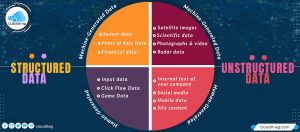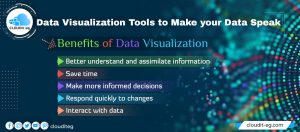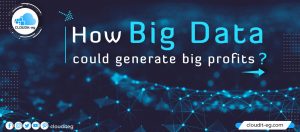How are businesses using the power of big data today? Here are six of the most popular Big Data practical cases.
1. 360 degree view of the customer
Many companies are using Big Data to design a kind of dashboard that creates a 360 ° model of the consumer. These dashboards gather information from several internal and external sources. They then analyze them and present them to customer service, sales, and/or marketing personnel to help them do their jobs.
Imagine the kind of dashboard an insurance company could create with information about their customers. Obviously, that would include demographic data. Such as names of clients, their addresses, household income, and their family members. There would also be commercial information on the types of policies that clients hold. This type of dashboard can also show which pages on the company website were recently visited by a given customer. Thus providing valuable clues as to why a customer may be calling.
It may seem unlikely, but many companies already have systems like this. They use them to increase the satisfaction of their consumers and their income.
2. Prevention of fraud
For credit card owners, fraud prevention is one of the best-known cases of big data. Even before advanced big data analytics became mainstream. Credit card issuers used rules-based systems to help them flag transactions that appear to be fraudulent. So, if a credit card was used to rent a scooter in Paris. But since the customer lived in Bogota, a customer service agent could call to confirm that the cardholder was on vacation and that no one had stolen it.
Using big data analytics and machine learning, fraud prevention systems can better detect criminal activity and prevent false positives. In the example already mentioned, for example, a sophisticated fraud prevention system could find that the customer had recently purchased airline tickets, sunscreen, and a new swimsuit before purchasing the car. rent
But fraud prevention systems can get even more sophisticated than that. According to Experian, fraud tends to be concentrated in certain geographic areas. Often near airports, making it easy for criminals to transport stolen goods. However, the riskier postal codes tend to change over time. Big Data Analytics can examine past records of fraudulent transactions. Thus quickly identify changing trends. Credit card companies and retailers can then pay more attention to postal code transactions, which become hotbeds of criminal activity.
3. Security intelligence
In the register of criminal activity, organizations also use big data analysis to thwart hackers and cyber attacks. The operation of an enterprise IT department generates an enormous amount of information. In addition, data on cyberattacks is available from external sources, for example, law enforcement or security officials. Many organizations are now adopting big data solutions to help them collect and understand all of this internal and external information to prevent, detect and mitigate attacks.
4. Unloading the data warehouse
One of the easiest ways to start using big data tools for a business is to delete some of their databases. Even among the few companies that have yet to start experimenting with big data analytics, it’s common to have a database that helps their business intelligence efforts.
Unfortunately, data warehouse technology tends to be very expensive for a business. Whether it’s for purchase or for operation. And as business leaders have started to demand more reporting and information from their BI teams. Data warehouse solutions have not always been able to deliver the desired performance.
Many companies use an open-source big data solution. We will cite Hadoop to replace or supplement their data warehouses. Hadoop-based solutions often offer much faster performance while reducing license fees and other costs.
5. Price optimization
Consumer (B2C) and business-to-business (B2B) businesses also use big data analytics to optimize the prices charged to their customers. For any business, the goal is to set prices in a way that maximizes their income. If the price is too high, they will sell fewer products, which will reduce their net return. But if the price is too low, they can leave money on the table.
Big data analytics allow companies to determine the most advantageous prices across historical market conditions. Companies more sophisticated in price analysis can also use variable or dynamic pricing strategies. They use their big data solutions to segment their customer base and create models that show how much different types of customers will be willing to pay under different circumstances. B2C companies that have tried this approach have had mixed results. But it is more of a norm among B2B companies.
6. Operational efficiency
In addition to helping organizations optimize their prices, big data analysis can also help them identify other potential opportunities to streamline operations or maximize profits. Often, this particular big data use case falls within the competence of BI or financial analysts.
These staff members have a long history of producing weekly, monthly, and quarterly reports that help senior managers track results. But as big data tools have become available and sophisticated. Analysts are able to integrate data from more sources and update these reports much more frequently.
For example, a national retailer may want to track hourly sales of a new product across all of their physical stores. Big data analyzes could easily highlight potential issues. For example, a particular store that had not sold any of the new products in the first few hours of deployment. A simple phone call could then reveal that the store manager forgot to present the new product. Staff could remedy the situation before it became more costly to the company or led them to inaccurate conclusions about the popularity of the product.




